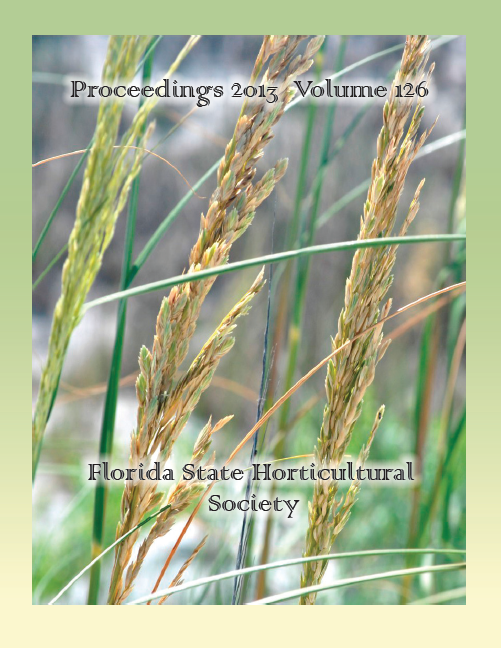Effect of Substrate Type and Fertility Level on Growth of Swamp Rosemallow (Hibiscus grandiflorusMichx.)
Abstract
Swamp rosemallow is a native wetland plant that adds beauty and interest to rain gardens, wetland restoration sites, and other areas with damp soils. Native plant growers wish to offer swamp rosemallow to clients, but little is known regarding optimum nursery and greenhouse culture requirements for this species. In these experiments, we evaluated the effect of four different substrates and three levels of controlled release fertilizer on a number of growth parameters. A destructive harvest after 8 weeks of culture revealed that fertility level had a significant effect only on stem diameter, but substrate type had a strong influence on stem diameter, plant height, dry biomass, and bud production. Plants grown in flooded sand yielded the lowest values in all four of these parameters. This information provides growers with guidelines to economically produce this attractive native hibiscus under greenhouse and nursery conditions.

